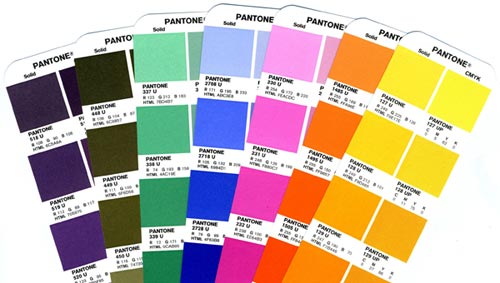For example if one where to take turquoise where its number is 15-5519 it would be the same colour, around the world.

The Pantone solid colour palette is made up of 1,114 colours, each of which are identified by three or four digit numbers followed by a suffix which is either C, U or M. The three suffixed refer to the type of paper the Pantone is on
- M = Matte paper
- C = Coated paper
- U = Uncoated paper
The Pantone colour system was created to help out printers and designers, so that they would have control on printing projects. The Pantone colour system is sometimes called as 'PMS' (Pantone Matching System) or 'spot colours' it is widely used in print graphics and publishing industry.
A typical Pantone colour swatch can be seen in the picture below, as one swatch contains various hues of one colour range included with the colour a Hex number (so that the colour can be viewed digitally) is provided as well as the Pantone colour itself.

No comments:
Post a Comment